Latest news and features
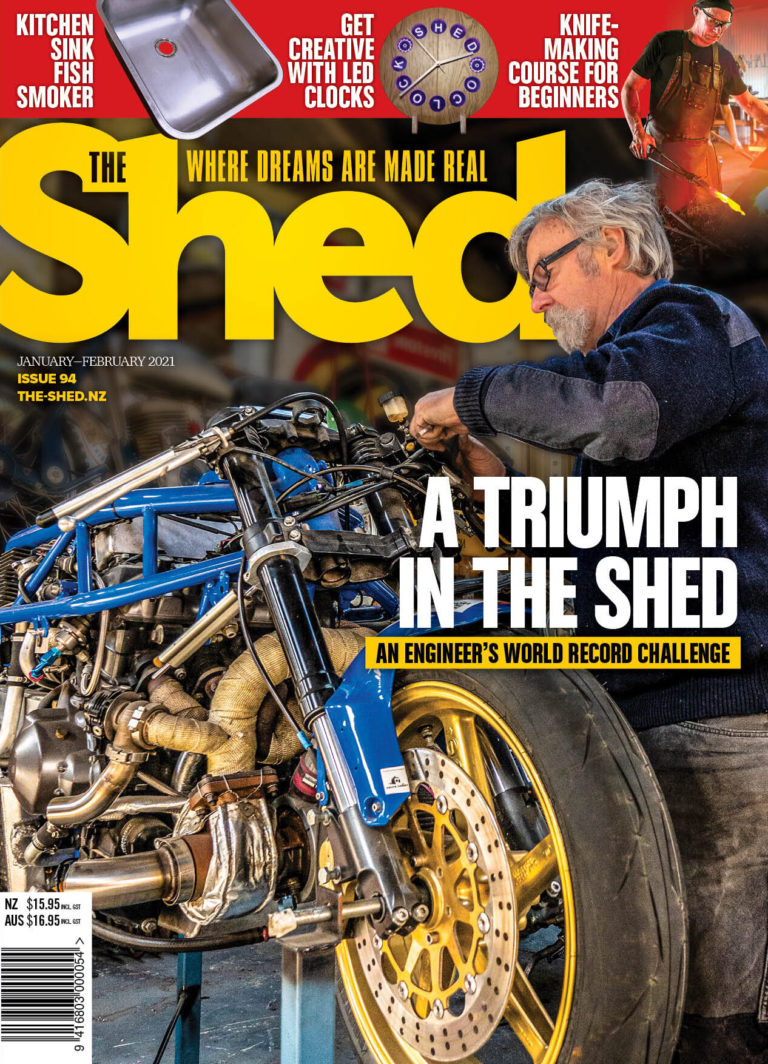
The Shed January/February 2021 Issue 94, on sale now
There’s a real Triumph in the issue of The Shed and a twin-engined one at that as well as the bonus of our annual The Shed 2021 wall calendar.
Our cover story this issue is about a central South Island marine engineer sheddie who really is living the dream. A love of classic cars and motorbikes has seen this marine engineer buy a working garage to store and restore his own collection as well as operate it as an everyday mechanical repair garage for local customers.

A satisfying lidded box
The size and shape of the lidded box is limited only by the size of wood you have, and your imagination. Keep in mind that the size of the lid must please the design of the box as a whole. I usually strive to make the size of the lid approximately one-third of the total box size.

The Shed Issue 93 now on sale in Australia
Well, it took a bit longer to arrive than usual but at last, the November/December 2020 Issue 93 of The Shed is on sale across Australia from today, Thursday 19 November.
The COVID 19 pandemic has played havoc with international freight shipping so its later than usual arriving in Sydney for distribution around the country. Australian subscribers will start receiving their copies from this week as well.

Make your own mortar water feature
As far as Do-It-Yourself art goes, I believe this is probably the best value for money, extremely satisfying, not to mention therapeutic, and it can last for years outside or can be passed down through the generations. I now enjoy doing this for its own sake, too. When you come home tired from work, it can be very relaxing to pour a mould of mortar in a box, or using one you prepared previously, to just start shaping and sculpting.

Polish query ‘Autosolved’
If you haven’t heard of Autosol, you can thank us later.
This revolutionary, ammonia-free product is the go-to cleaner and polish for uncoated aluminium surfaces. It leaves a clean sheen without scratching or hazing. The distributors say users describe it as “a product that does everything the advertising says it does”, “my go-to polish for aluminium”, and “perfect for alloy wheel rejuvenation”. It is available in a 75ml tube with screw caps from automotive, engineering, and hardware stores across New Zealand.
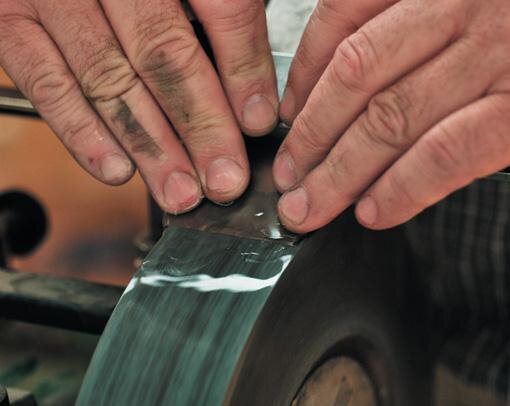
Sharpen up your blades
When honing a cutting edge on a steel blade, you are progressively over three or four stages reducing the size of the scratches on the two faces which meet up to make the sharp point.
The much-vaunted “mirror” edge simply refers to the stage where we cannot easily see the scratches with the naked eye and hence it looks smooth and shiny. This process, therefore, requires several sharpening stones with finer and finer surfaces (325 grit, then 1200 grit, then 6000 grit).

How to make jandals
First, we need a pattern for the sole. For yourself, stand on a suitable-sized piece of paper and have someone draw around your foot. It’s best to do so while you stand erect to give the maximum silhouette of your foot. The person marking must hold the pen perpendicular and be careful not to slant the pen under the arch of the foot or the heel.

Electric bikes – taking care of business
Let’s face it e-bikes are everywhere and they are here to stay. If the thought of extra complications and potential breakdowns are putting you off buying one then you’re not alone. Would you like an e-bike that you can build and maintain yourself?
Something that goes better than most, is easy to service and diagnose with readily available parts and plenty of support is becoming a priority for a lot of people looking for an e-bike that won’t end up as landfill in a few years’ time.

An elegant table with cabriole legs
Walnut is a great wood to work with and machines and finishes superbly. Timber like this deserves to be used in something special and this piece although it looks deceptively tricky is actually relatively straightforward and something that will be of use for generations. The elegant curves of a cabriole leg add an organic feel to a table.

The Shed November/December 2020 Issue 93, is on sale now
We showcase the metal-shaping and coachbuilding skills of Rod Tempero Motor Body Builders Ltd from Oamaru in The Shed Issue No. 93. The company’s world-famous and internationally sought-after car-building talents make it one of this country’s finest coachbuilders. We head to the mainland to meet Rod and his team and do our best to dig out as many metal-shaping and car-building secrets as we can.

A dead accurate optical punch
An optical punch consists of a brass body with two holes through it, one for use, the other for storage, because there are two rods. One rod is the punch, the other a vertical magnifying glass made of a plastic rod. You look down the viewing rod at a dot marked on its base. You then move the whole apparatus around until you can see the point where you want to put a punch mark. Holding the brass body, you remove the plastic rod and drop the steel punch back into the same hole, then hit it. Result: a perfect, vertically punched mark, precisely on the spot.

Folding wooden sawhorse plans from The Shed Issue 93
Here is an easy download for the plans to construct a foldable wooden sawhorse from The Shed Issue 93.

Pleasant Point Railway photo gallery
We visited and wrote about the impressive Pleasant Point Railway & Historical Society in South Canterbury, in The Shed September/October 2020 Issue 92.
Sadly, we just couldn’t squeeze in all the great photos we shot for the article into the magazine. As you will now see, these unpublished photographs are just too good to leave sitting on our hard drive so we felt we just had to share them with readers.
Enjoy.

Shed 92 on sale across Australia today
For all our Australian readers the wait is over to grab the latest issue of the magazine. The September/October, Issue 92, hits the shops all across the country from today 17 September.

Spotless shine
Polishing metal isn’t a task for which you want to be ill-equipped, especially when you’re chasing that perfect shiny finish! That is why Autosol has been the most trusted name since forever. The new Autosol 3in1 for Stainless Steel is specially developed to clean, protect, and leave a shiny streak-free finish on stainless steel surfaces — with anti-fingerprint effect.

Is it a beer keg? No, it’s a hangi
It’s not every day that you come across a blindingly brilliant and deceptively simple use for a piece of gear that you just knew would come in handy one day.
When sheddie Stan Scott showed me his prototype portable beer keg hangi, I knew it was something that the world needed right now… like world peace.

Installing a sash window
Old villas don’t necessarily have all the windows desirable for modern living.
In the project here, the homeowner wanted to install another window into an outside wall. The most effective method was to buy a window that was made by a joinery firm to match the existing window and create the hole in the wall to match.

Video of the weird and wonderful world of Andrew Hall
A visit to Andrew Hall’s shed — a single garage in suburban Henderson, West Auckland — is a portal into another dimension. In this realm, a sense of humour is essential.
For the past two decades, Andrew has been working full time at turning society’s cast-offs into three-dimensional cartoon gargoyles, aliens, monsters, and effigies of mirth.
2020 Father’s Day gifts for Dad
Keep Dad comfortable, entertained, and productive with these great products. We’re counting down to Father’s Day 2020 with these awesome deals!

Modern man, ancient craft
Asked why he has spent the best part of 20 years producing garden trugs, besom brooms, bentwood log carriers, wooden pitchforks, and rakes, he says he’s always had an inbuilt love of wood, of trees and the desire to work with his hands. “I was brought up on a farm in North Otago and in the Moeraki village.
My parents valued things like gardening, sewing, and cooking, and being self-sufficient. And those values were inculcated in me.

The Shed September/October Issue 92 is on sale now
There’s a real treat for knife makers in the September/October Issue No. 92 of The Shed.
We head to the Auckland workshop of master knifemaker Brent Sandow to get insights into what makes him such a well-regarded exponent of the art. We watch and learn as he goes through the steps on how he makes a Springbok Hunter knife.
Get ready, secrets are shared.

Make a simple toy truck
With toys, in particular, maintenance and reparability are important to ensure a long life. A broken plastic toy goes in the bin, whereas a well-designed wooden toy can make many trips to the repair shop over generations of play.
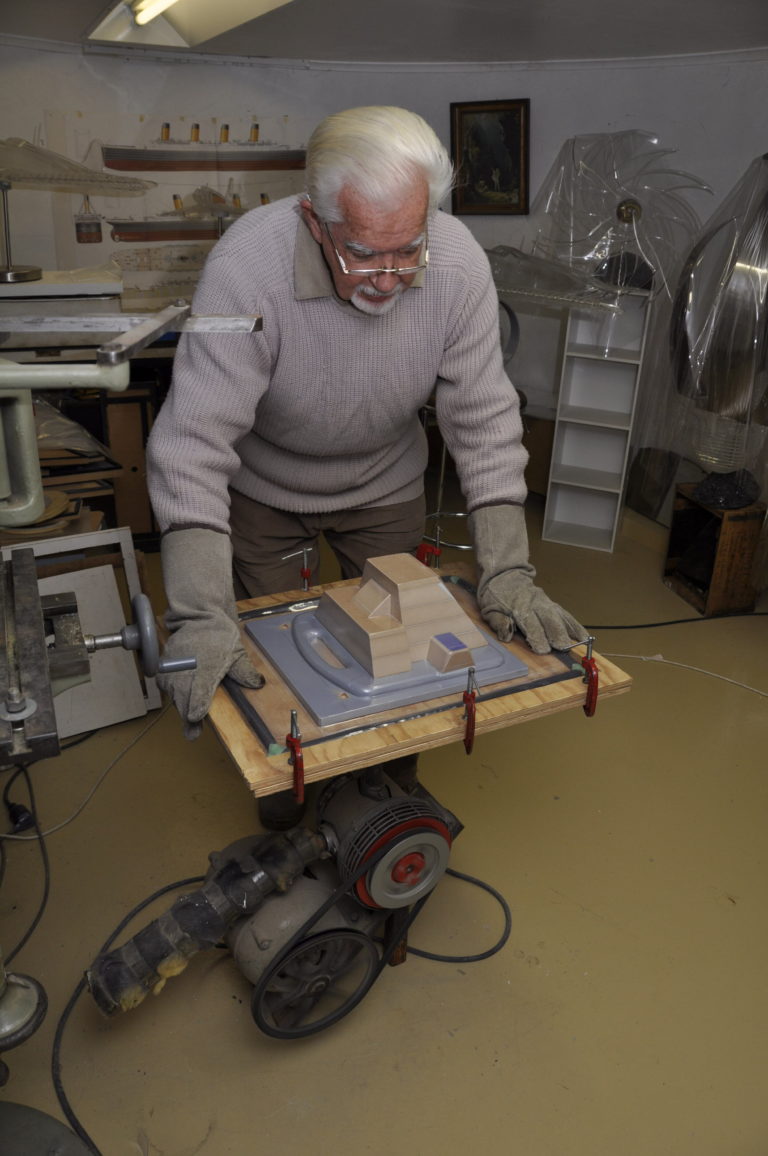
Make a simple vacuum former
A vacuum former is a very handy piece of equipment to have around the home workshop.
It works quite simply: heated plastic is sucked rapidly and strongly over a pattern or formed shape. As soon as the plastic has set again, it retains the shape.

Hold your grip
GripWorks’ very popular line of ‘Hunt Wilde’ injection-moulded FPVC grips come in a variety of styles, with local distributor Hi-Q Components stocking plain straight, ribbed nubbed, contoured bump, straight ribbed, tapered flanged, flanged rib-finned, and honeycomb options.

A toddler’s table and chairs
You can follow the basic design in this article or design your own version. Once you have absorbed some of the basics of furniture-making, there is a great sense of satisfaction in designing and making your own. As an amateur hobbyist, I find the process is just as important as the finished product itself, so to check this I decided I would try to make a scaled-down version of an adult chair with a curved back.

Make a camper trailer
American teardrops first became common in the 1930s after DIY magazines such as Popular Mechanics published plans to build your own. The ultra-lightweight concept normally only sleeps a maximum of two adults in the cabin and has a small outside galley or kitchen at the back of the trailer. Often these campers weighed little more than 450kg and were very streamlined so were ideal for towing behind small cars or for long road trips.
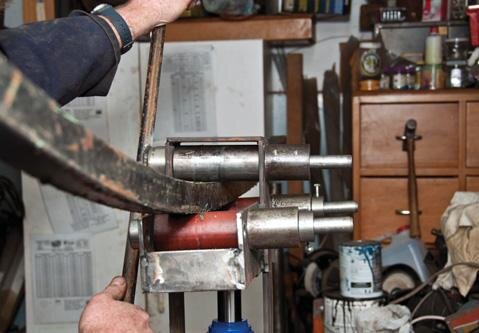
Making a ring roller
The solution was to use the offcuts and a cheap bottle jack to make a set of rollers that can bend the material into wide arcs. Since I had to buy the $39 jack, the budget was well and truly blown. But this ring roller will be useful for future projects.

Simple hydroponics nutrient solution
Hydroponics is all about growing without soil. In many ways, this simplifies the lot of the gardener, but it gives them added responsibility for providing plants with the right level of nutrients.
As water with nutrients tastes, feels, and looks much the same as plain water, a testing instrument called an “EC meter” or “CF meter” is used.

Building a 50cc mini-kart
The design is not intended to be a high-performance, go-anywhere vehicle. It is a school project and therefore there are a few compromises in the design. It is economical to construct, achievable and straightforward for average Year 12 students. I might add, with some guidance.
It is also intended that most, if not all, of the Tools4work Level 2 mechanical engineering standards can be assessed against this project. Some of the techniques described may seem unnecessary, such as using a surface plate and scribing block for marking out, the design of the bearing retainers, or the generous use of a Bramley tube bender.

The Shed May/June Issue 90 on sale today throughout Australia
The Shed Issue 90 is finally in shops across Australia from today.
The COVID 19 virus disrupted all shipping so this issue of The Shed is over six weeks late to arrive in stores. Our apologies for that delay but we hope you find the wait was actually worth it. Check out the fully illustrated content rundown for this magazine.
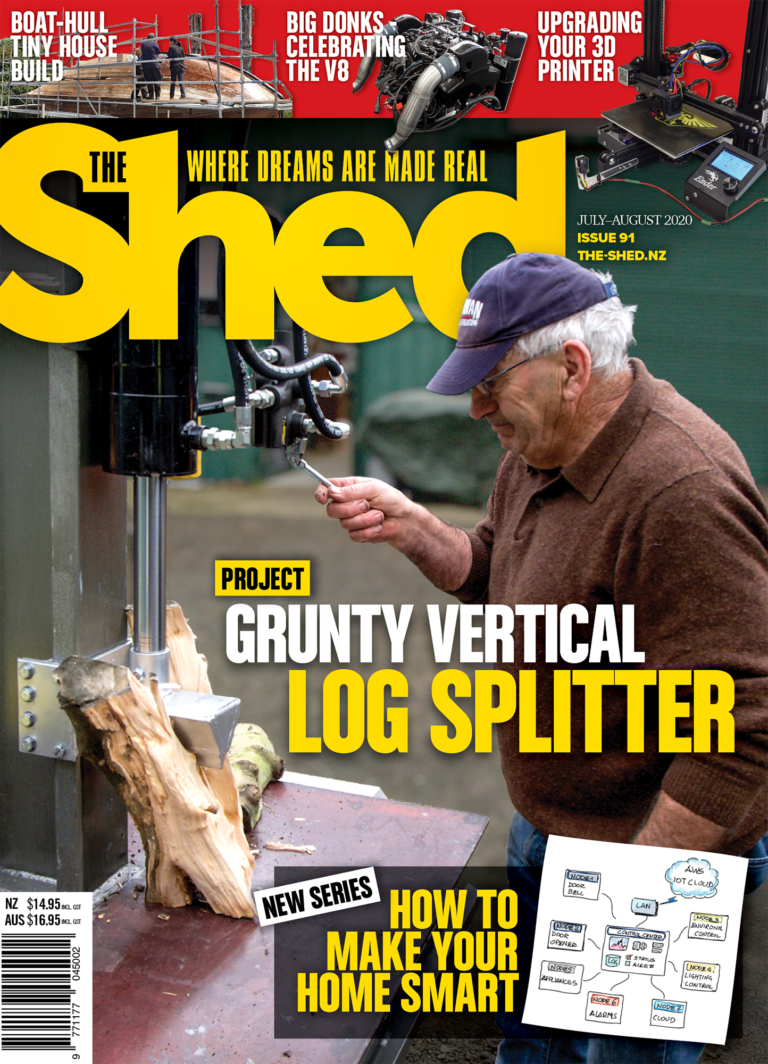
The Shed July/August 2020 Issue 91, on sale now
The July/August 2020 issue of The Shed, No. 91, has got something in it for every sheddie.
Even though there is something of a nautical theme to this issue, our cover story is on building a very powerful, vertical, hydraulic log splitter. Bill Stevenson from Christchurch walks us through the construction of his trailer-mounted log-splitting machine that was started prior to the Covid-19 lockdown, worked on during, and completed immediately after. A great effort.

Building a Stirling engine
I always get a thrill at seeing one of my engines running for the first time. It was especially true for this one because I had had no previous experience in making such an engine. The engine runs at about 600 RPM with a good differential between the hot and cold ends of the displacer tube.

Work, life and play
Most people have separate places for work, play, accommodation and their hobbies but Malcolm Anderson has successfully managed to combine them all into one.
Malcolm’s father, Bruce Anderson, has a passion for collecting and restoring motorbikes to the highest standard. One of his projects, a 1929 Harley-Davidson OHV Two-port Special that he restored from a pile of parts, now resides in the Harley-Davidson Museum in Milwaukee in America.

Shed Issue 90 late arriving in Australia
An update for all our Australian readers of The Shed.
Shipping schedules have been seriously disrupted with the COVID 19 Lockdown here in New Zealand therefore copies of Issue #90 won’t arrive in Sydney until mid-June.
Expect to see copies in the shops and in subscribers’ letterboxes about a week after 14 June. Our apologies for this lateness, let’s hope this is a one-off disruption.

Video of Cowper Trucks from The Shed Issue 90
In this issue of the magazine we featured the trucks and workshop of Dan Cowper of Cowper Trucks in his shed just outside Whanganui.
Check out this video where Dan gives us the background to his business and how he builds his go anywhere, do anything, V8-powered, 4×4 vehicles.

Make useful trammels
A trammel is a really useful item to have when you need to mark a curve onto sheet metal, plywood, MDF, plasterboard, or even a paved surface when painting lines for a netball court.
Sure, you can use a pencil and a piece of string but there can be a variation due to the angle that the pencil is held and differing tensions on the string. A trammel will easily produce an accurate arc.

Rimu Dining Chair
Start by drawing a full-size plan of side elevation and seat plan. You will probably want to make at least four chairs so it is easier to measure angles and sizes and maintain consistency in measuring from a full-size plan. Make a template from 12 or 16 mm MDF or plywood for forming chair back legs directly from the plan shape. I have found the easiest and most accurate method is to punch holes with an awl or sharp point and simply connect up the dots.
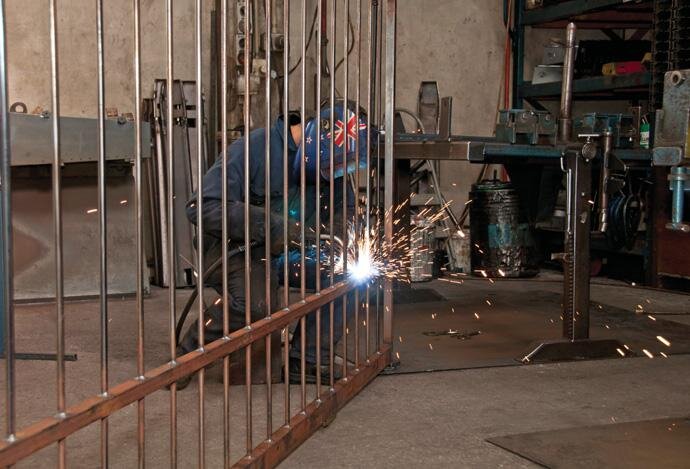
Installing an automatic gate
With the benefit that he worked for an engineering workshop, Karl knew that making the gate wasn’t likely to be a problem. He didn’t want an elaborate gate, rather one in keeping with his house that would tone in with his existing wooden fence.

Pipe bender that curves flats
But a pipe bender has no other use and that is too bad because it is a large expensive tool.
I wondered if the heavy 12-ton bottle jack could be used for some other purpose. Once I had inspected it, it seemed reasonable to modify the bender so that it could be used to bend flats as well as pipe.
